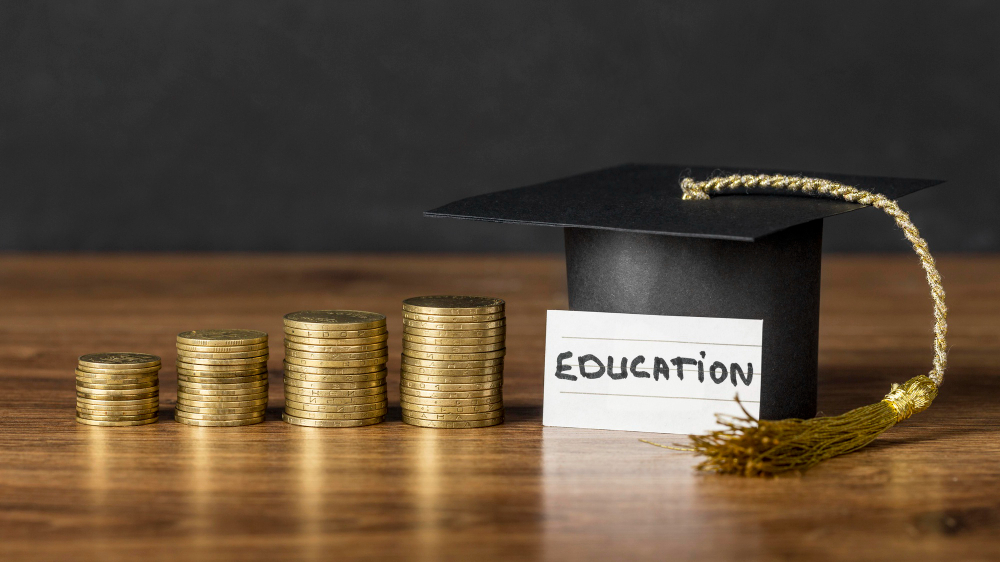
What is a student loan, and how to get a student loan
A student loan is a type of financial aid offered by private lenders to students who wish to finance their education. Students may use these loans to cover tuition, books, supplies, room and board, and any other expenses incurred while attending school. In exchange for the money lent out, students receive either a set amount of time to repay the loan (a variable-rate loan) or a fixed monthly payment over a fixed period of time (a fixed-rate loan). Interest is often charged at varying rates depending on the lender’s policies.
How To Get a Student Loan?
You should first decide what kind of student loan best suits your situation. A federal Direct Subsidized loan is the official name for a federally subsidized Stafford loan, which is a loan given to students whose families earn less than $65,000 per year. These loans have low interest rates, and borrowers do not need to pay back the principal until they graduate or leave college.
Borrowers must begin repaying the loan after six months of graduation or leaving college. Federal Unsubsidized loans are non-federal loans that are not guaranteed by the U.S. government. Because these loans have higher interest rates, borrowers must make payments immediately upon receiving them. Private student loans are loans provided directly by banks and other lending institutions. They are regulated by state laws and vary widely in terms of interest rates and repayment options. Many private student loans are not eligible for federal subsidies. If you choose to take out a private student loan, make sure you understand its terms well before signing anything.
Best Ways to Pay Off
What is a student loan, and how to get a student loan
There are three ways to pay off your student loans: 1. Repayment 2. Income-Based Repayment 3. Consolidation
- Repayment
Repayment is the most popular way to pay off your student debt. Repayments are based on your income and family size. You start making regular payments once you graduate or leave school. Your total balance is divided between your direct subsidized and unsubsidized student loans. When you reach the maximum allowed monthly payment, you’ll stop paying. After 20 years, your remaining balance becomes forgiven.
- Income Based Repayments
If you don’t qualify for repayment, you may still want to consider an income-based plan. Income-based plans allow you to pay only a portion of your debt each month. Payments are based on your discretionary income, which is determined by your monthly adjusted gross income. Payment amounts range from 0% to 25%, depending on your income. As long as you meet certain requirements, your remaining debt will be forgiven after 10 to 30 years.
- Consolidation
Consolidating your student loans makes sense if you have several types of loans. By combining your loans into one loan, you lower your monthly payments. However, consolidation comes with some drawbacks. You’ll lose access to some loan forgiveness programs, and your credit history might be negatively affected.
Documents required for student loan
You will need to complete an application for federal student loans. You will need to fill out the FAFSA (Free Application for Federal Student Aid) and have proof of income. If you do not qualify for financial aid, you may still be able to get a private loan. Private loans require a credit check and are less likely to be approved than federal loans.
The Department of Education requires students to submit certain documents before they receive their first disbursement of funds. These documents include:
- One copy of your W-2 form
- Your social security card
- Proof of enrollment at a school accredited by the U.S. Department of Education
- Documentation of your employment history
- Evidence of your assets
- Financial information about your parents
- Copies of each college transcript that have been verified
- Copies of any professional licenses held
- Any supporting documentation for your impairment
- A signed statement indicating whether you intend to repay the loan
What is the Difference between a student loan and an education loan?
Student loans and Education Loans have some differences. Student Loan is a type of loan given to students to pay for their school expenses. On the other hand, an Education Loan is a type of debt incurred due to higher education. There are many types of student loans, including Federal Family Education Loans (FFEL), Direct Subsidized Loans, Direct UnsubsidizeLoansan, Direct PLLoansoan, Consolidation Loan, Public Service Loan Forgiveness Program (PSLF), and Private Loan. In addition to these student loans, there are also some types of education loans, which include the Parental Loan Forgiveness Program(PFLP), Teacher Loan Forgiveness Program, and Veterans Educational Assistance (VEA).
Here are the major differences between student loans and education loans:
1- Student Loan is a type of financial aid provided by the federal government.
2A studentnt Loan is a short-term loan taken out by students to cover tuition fees, books, supplies, etc.
3- A student is eligible to get a student loan if he/she is enrolled full-time at an accredited college, university, vocational training program, or graduate school.
4- Students who are enrolled only half-time are not eligible to get student loans.
5- Students can take out student loans even after graduation.
6- Student loans cannot be discharged in bankruptcy.
7- If the borrower fails to make any payments on his/her student loan, then the lender can garnish the borrower’s wages, tax refunds, Social Security benefits, or even seize the borrower’s assets.
8- The maximum amount of student loan that a person can borrow is $23,000.
9- Student loans do not require a co-signer.
10- The interest rate on student loans is fixed while the interest rate on education loans is variable.
Conclusion
Student loans are not only expensive, they are also hard to get out of once you have them. Student loans are a big problem for many people. If you are struggling with student loans, then you need to know how to pay off student loans fast. There are numerous ways to settle student loan debt. You can use a debt consolidation loan to reduce the amount of interest you pay. Another option is to consolidate federal student loans into a private loan. A third way to pay off student loans is to apply for a debt management plan. All three options will help you to pay off your student loans faster.







